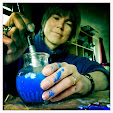Friday 20 April 2012
Mackerel
We were down on the jetty yesterday and someone brought in the first mackerel of the year from the Sound of Jura. Normally we don't expect them until June. Cuckoos and swallows are all arriving on time, but it's unusual to catch mackerel before you've even heard a grasshopper warbler. In the garden lizards and baby slow worms are basking in the sun and eying up the scurrying ants. Spring is here!
Monday 9 April 2012
Barnacle Geese
I've just spent a week on Oronsay to see the barnacle geese before
they head north in mid-April. 2500 of these birds spend the winter on
the island. The mild west coast weather and sympathetic farm-
management by the RSPB, mean that there is fresh grass for them to
graze all through the winter. You can hear their distant cackling
from wherever you are on the island, and glimpse a speckled black and
white flock on many a distant field.
The prospect of drawing a huge group of milling stripy geese is a bit
daunting. I can see why their markings confuse predators, as it's
difficult to pick out individuals. They seem like a herd of zebras on
the island plains.
In March the cattle and sheep are taken off the in-by fields around
the house to allow corncrake habitat to grow up. The geese love the
fresh new growth on these ungrazed fields. I sit in the landrover
with a telescope and try to make sense of the flock. It's still a
struggle. As the sun gets lower I give up and retreat to warmth of
the farmhouse. Sitting at the kitchen table, gin and tonic to hand,
I watch as the geese graze ever nearer, until they are just outside
the window. This close, I can appreciate the delicate patterning of
individual birds, and work out how the feathers lie. The black and
white must give camouflage against the snow and rock of their nesting
grounds. It's hard to imagine that in a few weeks these back-yard
geese will be refuelling in Iceland en route to the wild Greenland
tundra.
When we open the back door last thing at night there's a noise like a
breaking wave as the flock takes off in the dark. Over the next few
weeks the small flocks will join together and their calling get
louder and louder as they wait for a wind from the south. Then
suddenly one morning the island will be quiet.
Labels:
barnacle geese,
oronsay,
RSPB,
scottish wildlife artist
Tricky Tups
To get to the shallow pools where the lapwing display on Oronsay,
I have to negotiate several gates.
Each one involves getting in and out of the landrover twice,
and many involve wrestling with an idiosyncratic and
cranky bolt. Worse still, the entire route can be surveyed from the
kitchen window of the farm, so all my tribulations can be noted by
Mike. The trickiest part of this obstacle course is the gate onto the
dunes where every morning a reception committee of tups awaits me.
All winter they have been fed pellets to supplement the winter grass,
and they see no reason why that should stop now. As I open the gate
they all surge forwards, jostling around the landrover and banging it
with their horns. I manage to get past them, but now of course the
sheep are on the wrong side of the gate. I try to run around them to
herd them back through, but more animals stream into the field,
bleating expectantly at me. Eventually I grab the plastic bag that
covers my sketch pads and shake it at them. Food!! They stream back
through the gate as I run twice around the landrover and swing the
gate closed, hoping that Mike has finished his breakfast and is busy
elsewhere.
Seal Pup
The grey seal pup seemed intrigued but not frightened by the flock of starlings that descended all around him on the high tide-line. The birds came to feed on kelp-fly larvae in the seaweed. The pup was stranded, as grey seals can't swim until they're a month old.
I made this monoprint in the winter after visiting the seal breeding-colony on Oronsay in October. The island is a Site of Special Scientific Interest for this seal (as well as chough and corncrake), and up to 1000 pups are born here each season. Unlike the smaller common seal which feeds in shallow water around the coast, satellite tagging of grey seals from Oronsay has shown that they travel as far as Ireland and to the edge of the continental shelf for food.
Subscribe to:
Posts (Atom)




